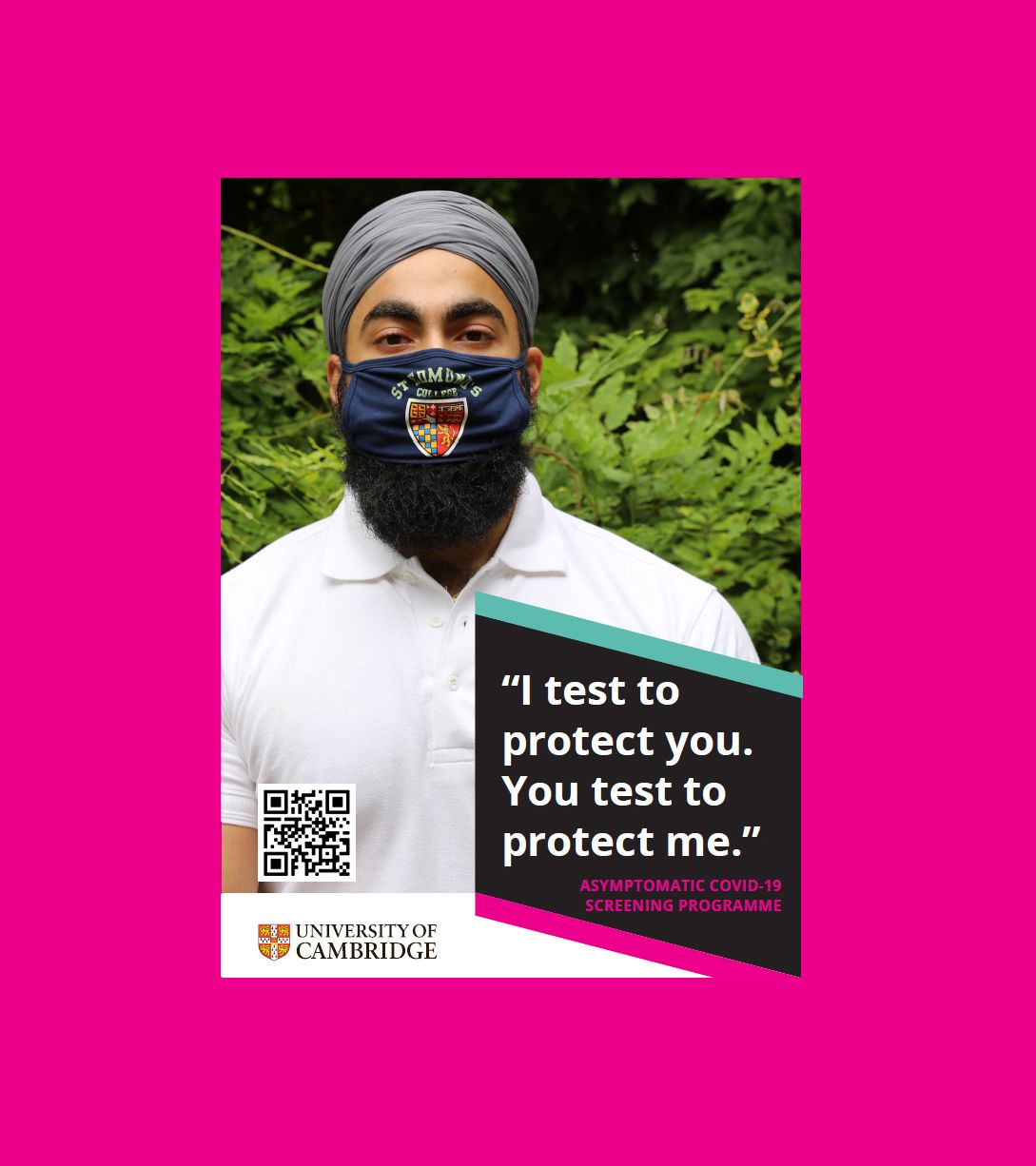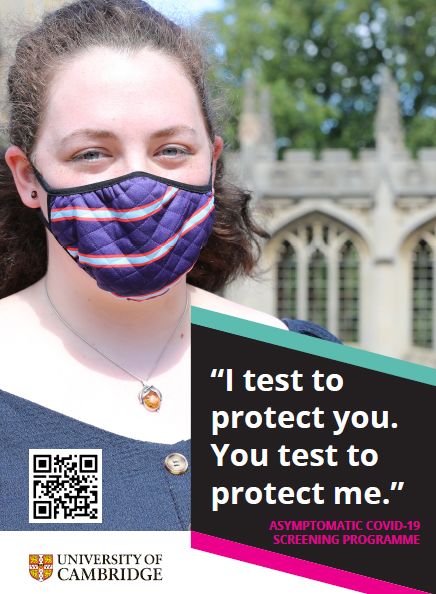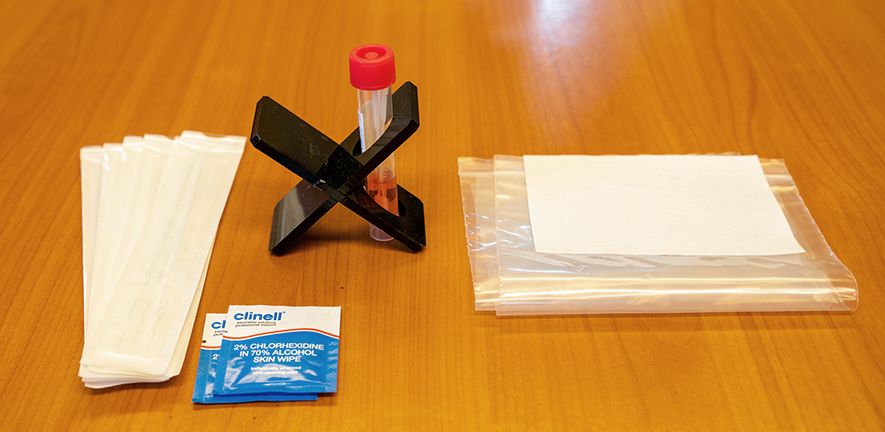How mass testing helped limit the spread of COVID-19 at the University of Cambridge
Innovative approach shows how higher education institutions can re-open safely

First published 1 June 2021. Updated 8 February 2022.
A combination of testing programmes for staff and students, infection control measures and genomic surveillance helped reduce the number of cases of COVID-19 at the University of Cambridge and keep the wider community safe.
At the start of autumn term in October 2020, the University of Cambridge introduced a free weekly asymptomatic screening programme for all students living in College accommodation. It is complemented by a testing programme for staff and students with symptoms of possible COVID-19. Both programmes use PCR testing – still considered the gold standard.
Professor Stephen Toope, Vice-Chancellor of the University of Cambridge, said: “In just eight weeks, a dedicated team at the University set up, from scratch, an innovative programme which, at its peak, was testing around 10,000 students a week. This was an incredible achievement."
Together with staff at our University and Colleges, those colleagues have all worked tirelessly to help us keep our students, staff and the wider Cambridge community safe. I’m truly grateful to them and to every student who has taken part in the programme over the past academic year.
Cambridge researchers have released back-to-back studies examining the role of the screening programme, together with other infection control measures, in managing SARS-CoV-2 infections at the University. The results have been made available before peer-review, to allow rapid sharing of information that may be helpful for other universities, as well as mass testing programmes in different settings. [Update: The research was published in the peer-review journal Nature Communications on 8 February 2022.]
Patrick Maxwell, Regius Professor of Physic at the University of Cambridge, said: “University students are at particular risk of transmitting coronavirus because they live in shared accommodation, and often socialise in large networks. We know that it is possible to spread the disease without showing symptoms. Our team has shown that pooled asymptomatic screening is feasible and effective, and combined with infection control measures make it possible to keep the number of infections very low.”

PhD student Nordin Ćatić swabbing for SARS-CoV-2 infection. (Credit: Dominic Hall)
PhD student Nordin Ćatić swabbing for SARS-CoV-2 infection. (Credit: Dominic Hall)
Asymptomatic screening for COVID-19 helps control transmission
During autumn term 2020, 12,781 students living in College accommodation participated in the University’s Asymptomatic COVID-19 Screening Programme. Students were initially screened every fortnight, but by week seven all participating students were offered screening every week. More than four out of five (82%) of all eligible students ultimately agreed to take part.
Participating students swabbed their noses and throats, then pooled their swabs in the same sample tube as other students from the same household. Pooled samples were analysed at the Cambridge COVID-19 Testing Centre, a collaboration between the University, AstraZeneca and Charles River Laboratories. Pooling swabs made the programme much more efficient, without losing test sensitivity. Over the study period, 50,376 swabs were screened, using only 16,945 tests.
There was no evidence that relying on voluntary participation, or using nose and throat swabs, was a barrier to students taking part. In fact, in a separate survey of more than 750 participants, over 95% of respondents were satisfied with the screening programme and thought that it had made an overall positive contribution to the Cambridge community.
Among 671 students diagnosed with SARS-CoV-2 infection over the study period (5% of participants), 299 (45%) were either identified or pre-emptively asked to self-isolate because of the screening programme. Using a model based on transmission at the University, the researchers estimated that weekly screening reduced the ‘R number’ – the average number of people an individual would infect in a susceptible population – by about a third.
Dr Nicholas Matheson, from the Cambridge Institute of Therapeutic Immunology and Infectious Disease (CITIID), designed the screening programme. He said: “By combining regular asymptomatic screening with readily accessible symptomatic testing, we were able to detect almost all cases of SARS-CoV-2 infection amongst students living in our Colleges.
“We hope our screening programme will serve as a useful example for other universities and colleges looking at ways to keep their students, staff and communities safe. We’ve shown that it’s possible to do this at scale by pooling samples, making it logistically and economically viable, without compromising test performance.
“Most importantly, we’ve provided real-world evidence that regular, voluntary asymptomatic screening can be effective in helping control COVID-19 transmission. With the current uncertainty around new variants of concern, and most young adults in the UK – let alone the world – not yet vaccinated, that’s an important lesson about mass testing in general, not just in universities.”

Poster for University of Cambridge asymptomatic screening programme
Poster for University of Cambridge asymptomatic screening programme
Genomic sequencing confirms effectiveness of infection control measures
The University of Cambridge plays a leading role in the COVID-19 Genomics UK (COG-UK) consortium, which sequences the genetic code of viruses isolated from infected individuals to help understand the spread of infection. By analysing these sequences, it is possible to plot a ‘family tree’ (known as phylogenetic tree) of viral isolates and, coupled with epidemiological information, determine whether cases are related.
During autumn term, COG-UK analysed 446 genomes from the University’s testing programmes. Because these programmes use PCR-testing, all positives samples were readily available for sequencing.
The team found that the great majority of transmission chains were short, suggesting that infection control measures implemented by the University, including asymptomatic screening, support for self-isolation and in-house contact tracing, were successful in controlling transmission. In fact, 70% of all University cases belonged to one genetic cluster, likely dispersed by attending a nightclub.
Transmission mainly occurred within student accommodation and/or between students on the same courses. There was minimal evidence of transmission in University departments, or between students and staff. Critically, there was little evidence of transmission between the University and the local community.
Dr Ben Warne, also from CITIID, said: “There are several takeaways from our findings. First, we need to be cautious about access to certain types of high-risk venues during a pandemic, particularly in the context of a young, susceptible student population.
“Second, spread of the virus through the University has been effectively contained using a combination of prompt case identification, including asymptomatic screening, and simple infection control measures, such as supporting affected students and their contacts to isolate.”

Asymptomatic screening programme kit (Credit: Nordin Ćatić)
Asymptomatic screening programme kit (Credit: Nordin Ćatić)
Dr Dinesh Aggarwal, from the Department of Medicine, added: “The lack of evidence of overspill from the University to the community was reassuring and suggests that, with appropriate precautions, it can be possible to keep universities and colleges open safely during the pandemic.
Through COG-UK, the UK has been at the forefront of using genomic epidemiology to inform outbreak investigations. With the widespread availability of sequencing, we believe it is a critical part of public health surveillance required to understand SARS-CoV-2 transmission and biology, and will be a critical part of future pandemic preparedness.
For more information on how the Asymptomatic COVID-19 Screening Programme was set up and run, see ‘Safety Screens: How COVID-19 testing is helping keep Cambridge students - and the wider local population – safe’.
References
Warne, B, et al. Feasibility and efficacy of mass testing for SARS-CoV-2 in a UK university using swab pooling and PCR
Aggarwal, D, et al. Genomic epidemiology of SARS-CoV-2 in a UK university identifies dynamics of transmission. Nature Comms; 8 Feb 2022: DOI: 10.1038/s41467-021-27942-w

